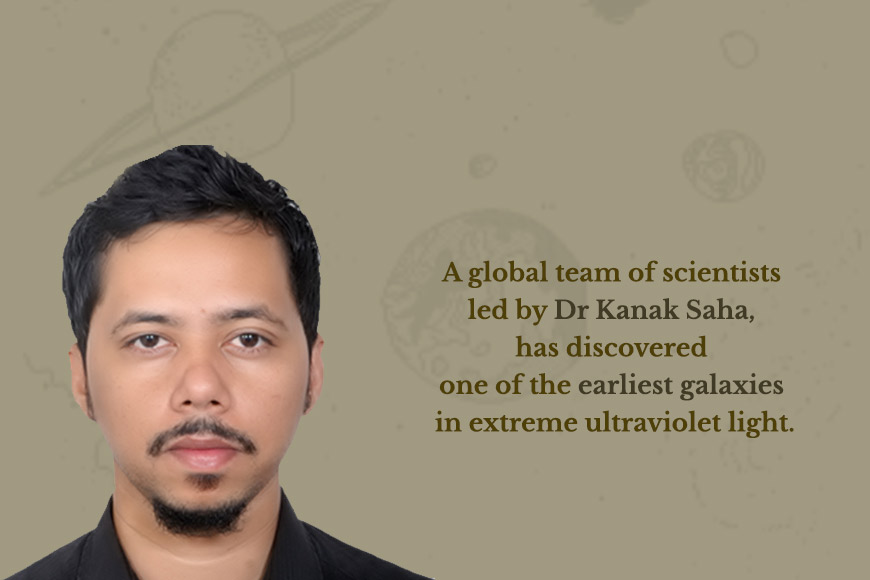Dr Kanak Saha and his team discovers one of the earliest galaxies in extreme ultraviolet light

In a major breakthrough, a global team of scientists led by Dr Kanak Saha, Associate Professor of Astronomy at Inter University Centre for Astronomy and Astrophysics (IUCAA) has discovered one of the earliest galaxies in extreme ultraviolet light. AstroSat, India’s first multi-wavelength satellite that has five unique X-ray and ultraviolet telescopes working in tandem, has detected extreme UV light from a galaxy called AUDFs01, 9.3 billion light-years away from Earth.
The discovery made by Saha and his team was published on August 24 by Nature Astronomy. The team comprises scientists from India, Switzerland, France, USA, Japan and Netherlands. The team observed the galaxy, which is located in the Extreme Deep field, through AstroSat. These observations lasted for more than 28 hours in October 2016. But it took nearly two years since then to carefully analyze the data to ascertain that the emission is indeed from the galaxy.
‘This is a very important clue to how the dark ages of the Universe ended and there was light in the Universe,’ said Dr Somak Raychaudhury, Director of IUCAA. ‘We need to know when this started, but it has been very hard to find the earliest sources of light,’ he added.
Since UV radiation is absorbed by Earth’s atmosphere, it has to be observed from space. Earlier, NASA’s Hubble Space Telescope (HST), which is significantly larger than the Ultra Violet Imaging Telescope (UVIT) on Astrosat, did not detect any UV emission (with energy greater than 13.6 eV) from this galaxy because it is too faint.
AstroSat/UVIT was able to achieve this unique feat because the background noise in the UVIT detector is much less than the ones on HST. As Dr Saha pointed out to the media: ‘We knew it would be an uphill task to convince the international community that UVIT has recorded extreme-UV emission from this galaxy when the more powerful HST has not… this discovery of AUDFs01 by AstroSat establishes that there is hope and perhaps, this is the beginning.’
A statement issued by IUCAA explained that after the Big Bang, the Universe was a hot soup of particles (i.e. protons, neutrons, and electrons). As the universe started to cool, the protons and neutrons began combining into ionized atoms of hydrogen (and eventually some helium). These ionized atoms of hydrogen and helium attracted electrons, turning them into neutral atoms — which allowed light to travel freely for the first time, since this light was no longer scattering off free electrons. The universe was no longer opaque. But there were no stars, and no galaxies, and the Universe was dark.
A while after this, maybe a few hundred million years after the Big Bang, the dark ages ended when the first stars and galaxies formed and the energy pouring out from them ionized the hydrogen and helium, splitting the atoms back again in protons and electrons, — this is the epoch of reionization.
Astronomers have been looking for sources that re-ionized the early universe. The usual suspects have been the first astronomical objects, especially the newborn small galaxies. But observing ionizing radiation from these sources is next to impossible. The probability that a fraction of extreme-UV photons escape the host galaxy and are caught by a telescope on Earth is practically zero, because these photons will be absorbed by the gas in the galaxy or the gas surrounding the galaxy or the matter between the galaxy and us.
How some of these high-energy photons manage to cross all the barriers and reach Earth is a mystery. The absorption in the intergalactic medium is so severe that it is impossible to observe ionizing photons in the reionization epoch directly.












